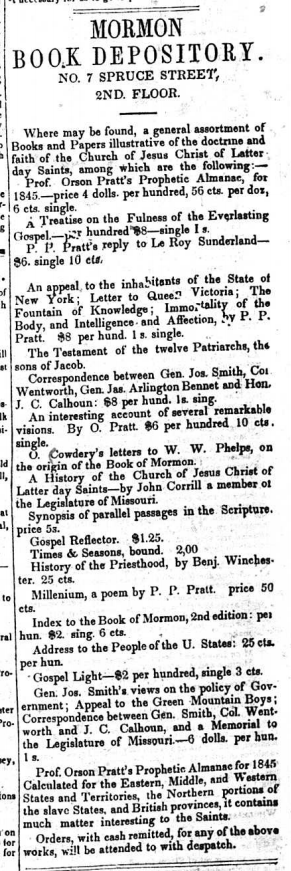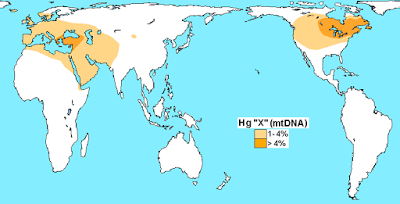Overcoming false traditions about Cumorah
Many people have embraced the New York Cumorah, but many still fight against it. There is still a month to go. Maybe it will happen, but there are a lot of holdouts among LDS scholars and educators.
Anecdotally, I know many Gospel Doctrine teachers have tried to offer alternatives to the standard teaching that the Book of Mormon took place in Central America (Mesoamerica). In many cases, they have faced opposition from people who have been taught a false tradition by LDS scholars and educators. The false tradition centers on the Hill Cumorah.
It’s not easy to overcome false traditions.
It has been said that human intellect is like a speck floating on a sea of emotion, and that’s what I see happening here. My only explanation for all the emotion involved with the Cumorah question is Mesomania, as I discuss on that blog here.
I’m still hopeful that LDS scholars and educators will align their teachings about Cumorah with the prophets and apostles, but so far it hasn’t happened, so we need to identify which traditions are false.
If you’ve been following the Cumorah question, you know that LDS scholars and educators who promote the Mesoamerican geography claim that the idea of Cumorah being in New York was a false tradition started by unknown persons early in the Church. They go on to claim that Joseph Smith simply adopted this false tradition and perpetuated it, along with all of his contemporaries, including his successors as Presidents of the Church.
You might find that unbelievable, but it’s true. If you want specific citations, I can provide them, but you don’t have to look far.
In fact, every time you read or hear something by modern LDS scholars and educators that connects the Book of Mormon events* to Mesoamerica (Central America), the author or speaker has repudiated the New York Cumorah and all the prophets and apostles who, they claim, have “perpetuated a false tradition.” You will find this at Book of Mormon Central, BYU Studies, the Maxwell Institute, Meridian Magazine, and all the rest. You will hear it in Sunday School and seminary and institute classes. You will hear it at BYU campuses.
The bottom line: these LDS scholars and educators claim they are correcting the prophets and apostles.
They, the scholars, think they are overcoming this false tradition by promoting the idea that Cumorah is actually in Mexico. Or Baja. Or Panama. Or Peru. Or Chile. Or anywhere else that is not in New York.
In some places, they are using abstract maps to avoid the New York Cumorah.
In my view, the false tradition we should be concerned about is the idea that Cumorah is not in New York. The most common alternative is the claim that Cumorah is in Mexico. This tradition was started in the 1920s, after everyone who personally knew Joseph Smith had passed on. This tradition was adopted by LDS scholars over the objection of of Joseph Fielding Smith and other prophets and apostles.
So the question now is, how do we overcome this false tradition about Cumorah in Mexico?
__________________
I suggest three things:
1. Read Letter VII (Seven) and recognize how it was universally accepted by Joseph Smith and all of his contemporaries. I have lots of documentation on my Letter VII blog here:
http://www.lettervii.com/
2. Learn about the New York setting. Mesoamerican advocates claim the New York hill can’t be Cumorah for two reasons.
a. It doesn’t fit their interpretation of the text. When you go through their list of “requirements,” you see the requirements were designed to fit their Mesoamerican setting. They require volcanoes, for example, but the text never mentions volcanoes. When you read the text instead of the Mesoamerican scholars’ interpretation of the text, the New York site fits nicely–just as Joseph Smith and Oliver Cowdery said it did.
b. It is a “clean hill,” meaning there are no artifacts there. This rationale is based on the work of John Clark, a BYU archaeologist who published some cursory analyses of the archaeology that I’ve analyzed previously in this blog. It is often cited by the Mesoamerican scholars, who also outright ignore the accounts of people who actually worked at the Hill Cumorah and recovered boxes full of ancient war implements, as well as other accounts of farmers in the area who plowed up artifacts every year that they sold to tourists or kept in private collections.
There is lots of material here: http://moronisamerica.com/
3. Assess the scholarship of the Mesoamerican advocates. In this blog and in other forums, I’ve analyzed just a few of the dozens of articles, books and blogs on the topic, all of which are thoroughly dependent upon Mesomania. What I mean by that is if you already believe the Book of Mormon took place in Mesoamerica and you want your bias confirmed (i.e., you have Mesomania), the writings of the Mesoamerican advocates are great. They will definitely confirm your biases. But if you look at them objectively, they don’t make their case. Not even close. They use a series of logical fallacies and illusory correspondences that are easy to identify.
__________________
The most important thing for you to keep in mind is that you are not required to accept what Mesoamerican scholars have been promoting for decades. Think for yourself. Read the Book of Mormon carefully and in the light of what the prophets and apostles have said in General Conference and in the scriptures.
Sooner or later, we will overcome the false tradition that Cumorah is not in New York.
__________________
*There is a difference between saying people living in Latin America are Lamanites and saying Book of Mormon events took place in Mesoamerica. Because of migration, Lamanite ancestry could have spread from North America where the Book of Mormon events took place throughout Latin America.
Source: Book of Mormon Wars




